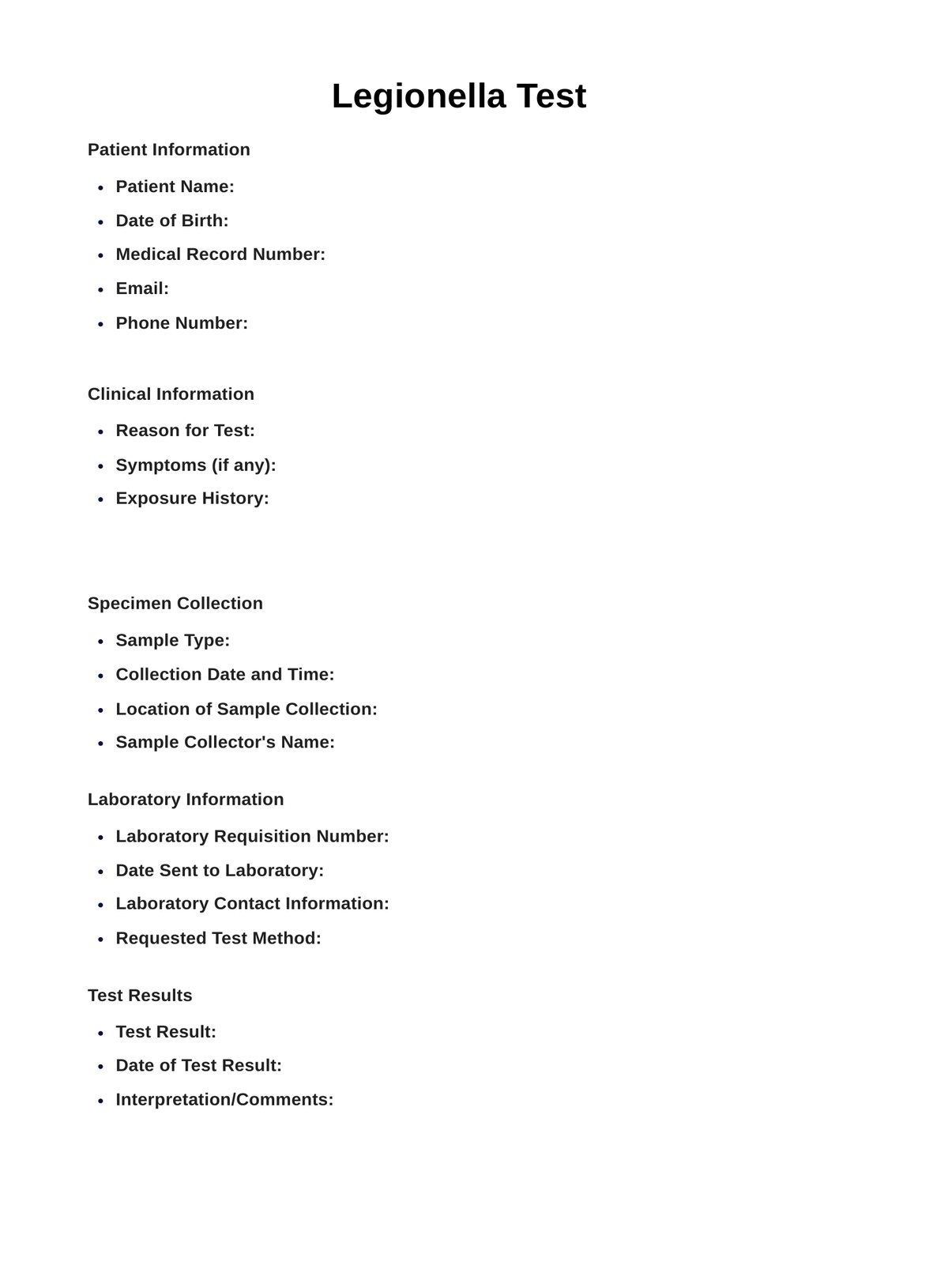Legionella tests are typically requested by facility managers, healthcare institutions, industrial facilities, hotels, and public health authorities to ensure water system safety and protect occupants' health.

Efficient Legionella testing for water system safety. Download the Legionella Test PDF template to streamline documentation in medical practices.
Legionella tests are typically requested by facility managers, healthcare institutions, industrial facilities, hotels, and public health authorities to ensure water system safety and protect occupants' health.
Legionella tests involve collecting water samples from specific points in a water system. These samples are then analyzed in a laboratory using various methods, including culture-based, nucleic acid, or antigen testing.
The time required for a Legionella test varies depending on the method used. Culture-based tests can take several days to produce results, while molecular methods like PCR can provide quicker results, often within 24 to 48 hours. Antigen tests may offer rapid results in a matter of hours.
EHR and practice management software
*No credit card required
Free
$0/usd
Unlimited clients
Telehealth
1GB of storage
Client portal text
Automated billing and online payments